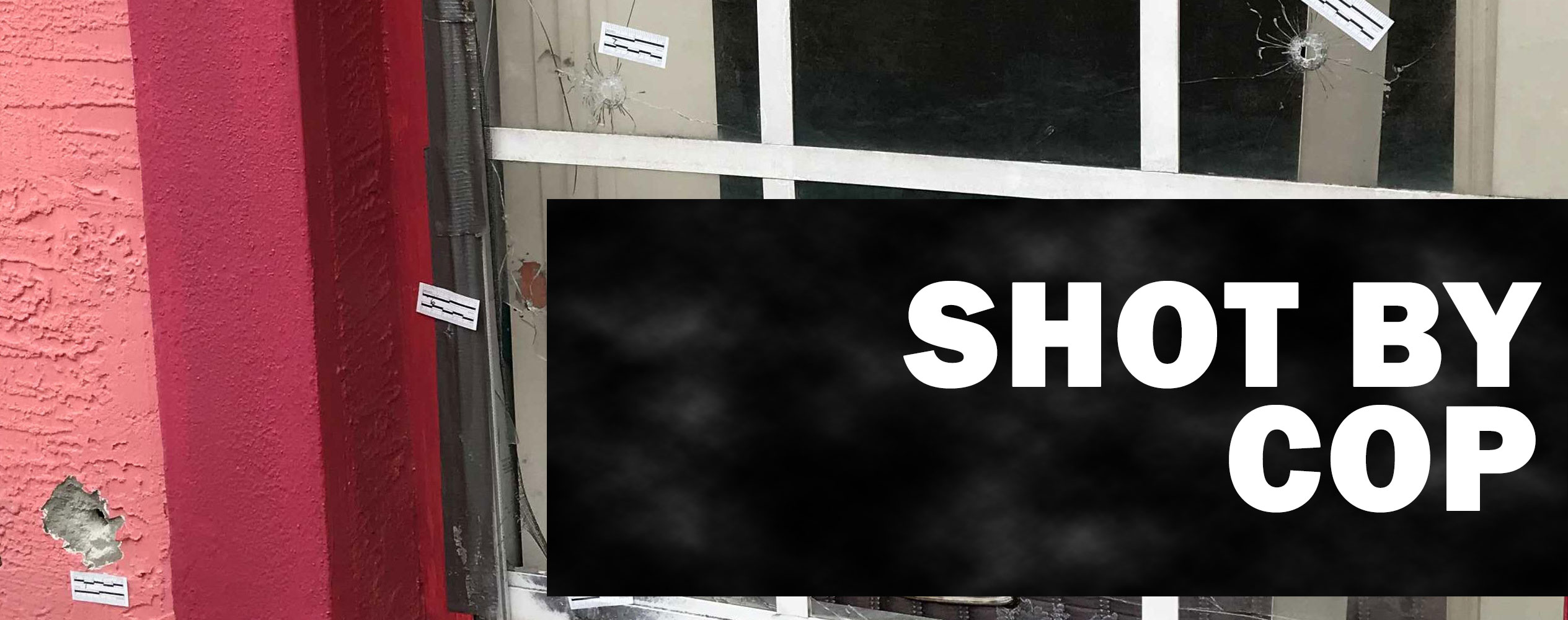
Armed, dangerous, and on drugs
IN THE SERIES: MAIN | SUICIDES | ACCIDENTAL SHOOTINGS | UNSOLVED SHOOTINGS | SHOT BY A COP | LIMITING VIOLENCE
When Raymond Roberts fired an AK-47 at Daytona Beach police, he said it was because the drugs he took and alcohol he drank, combined with mental illness, made him lose touch with reality.
One of the large-caliber bullets police said Roberts shot from the Russian-made automatic rifle bore into Officer Kevin Hird’s arm Nov. 25, 2018, shattering bone and shredding flesh.
“I didn’t know that was the police,” Roberts told The News-Journal in a recent phone interview from jail. “They never identified themselves. I was basically out of my mind at the time, so I didn’t know who it was. They didn’t have no police lights.”
Dillon Parker, also in Volusia County’s jail after a gunfight with police about a week before Roberts, said he was in a similar fog.
“In all God’s honesty, when I got out of that car I thought I was playing ‘Grand Theft Auto,’ ” Parker told The News-Journal. “It felt like I was in a video game. It felt like I was in another world. It didn’t feel like it was really happening.”
Parker quickly found out the bullets slicing through the air were real. He ended up the one shot in an exchange of gunfire with DeLand police and Volusia County sheriff’s deputies in DeLeon Springs.
Hird and Parker were two of the 176 people shot in 2018 in Volusia and Flagler counties. In a first-of-its-kind investigation, News-Journal reporters reviewed every documented instance of someone being shot in both counties. The analysis looked at crimes, accidents, and suicides involving firearms.
Hird, a 28-year-old combat veteran in his first year as a police officer, is waiting to return to full duty. The large cast that initially encased his whole arm now has since shrunk to a smaller one around his forearm. Hird is a large man, and he was told that was the reason he was able to absorb an AK-47 bullet without losing his arm.
Hird was the first law enforcement officer shot in Volusia County since 2011.
Roberts and Parker are locked up at the Volusia County Branch Jail without bail while awaiting trial. Both inmates agreed to speak to The News-Journal in separate telephone interviews. And each believes they should receive leniency because of their mental condition during their encounters with police.
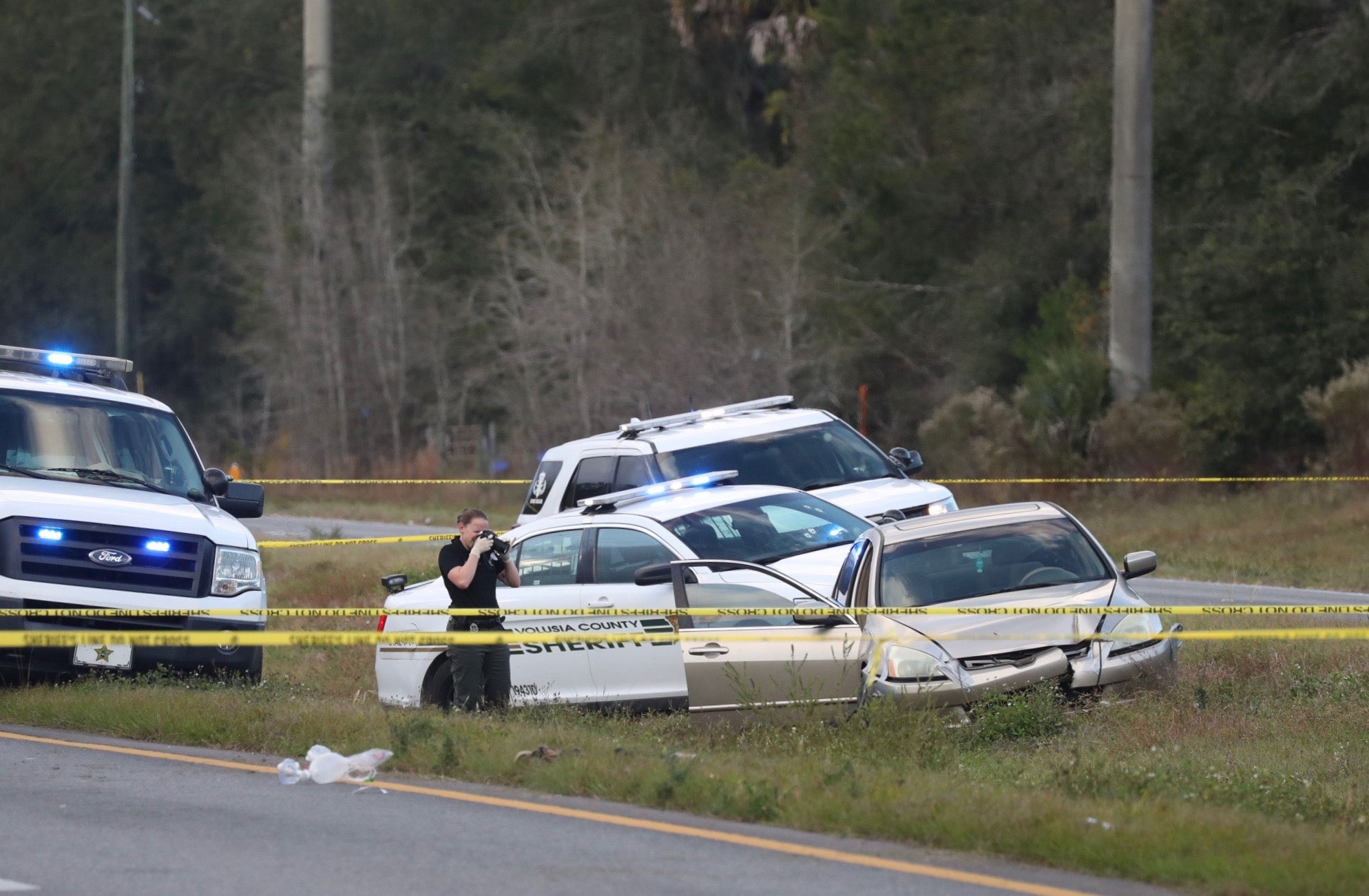
Felons with guns
Because they are convicted felons, both Roberts and Parker couldn't legally own or carry guns.
But it’s difficult to keep firearms out of the hands of felons. Volusia County Sheriff Mike Chitwood pointed out there are millions of firearms out there.
About 393 million guns are in civilian hands in the United States, according to a June 2018 publication from the Small Arms Survey. That’s more than the 328.4 million people the U.S. Census Bureau estimates live in the United States.
Guns are plentiful in Volusia and Flagler counties, too, and do not have to be registered. Hundreds of guns are stolen in a variety of ways each year, and it’s impossible to stop private sales and exchanges.
From unlocked vehicles alone, thieves stole 140 firearms in 128 reported incidences in 2018 in Volusia County, Sheriff’s Office records show. That was an improvement from the year before when 179 firearms were reported taken from vehicles.
“Everywhere from burglaries to straw purchases to car-breaks,” Chitwood said.
Parker, of Orange City, said he got his guns “on the streets,” but he declined to go into details as to exactly how he got them or from whom.
Roberts, of Daytona Beach, said he found his high-powered rifle stashed beneath a house.
Chitwood said he’s heard people saying they had found guns before.
“I’ve been a cop for 32 years, I’ve been alive for 55 years,” Chitwood said. “I have never walked down a street, walked through an alleyway, found a gun, a gold bracelet, a bag of money. That just never, it never happens.”
‘I didn’t know it was the police’
In Roberts’ case, Daytona Beach police got a call about a suspicious man waving a rifle at the corner of Martin Luther King Jr. Boulevard and South Street around 11 p.m. on Nov. 25, a Sunday. When Hird and Lt. Jeremy Nikolow arrived, Roberts started shooting at them, according to Roberts’ arrest report.
Hird was hit in the right arm by one of the assault rifle’s bullets. Roberts ran as officers returned fire without hitting their target. Minutes later they captured Roberts without anyone else being shot.
Roberts has long had trouble with the law. He was sentenced to state prison in 2006 for one year and three months for possession of cocaine. He was sent back to state prison in 2010 and served about two years of a three-year sentence on another cocaine charge.
Roberts’ first firearm-involved arrest was in October 2016, when he was accused of threatening his cousin with a shotgun. When the cousin declined to give testimony, prosecutors didn't press charges.
March 8, 2018, started a violent streak for Roberts. When he was approached by a police officer investigating whether Roberts hit a store worker, Roberts started to pull a gun from his pocket.
According to an arrest report, Roberts said, “I got eight shots.” He added, “I’m ready to die today, let’s get it.”
He took out a shotgun from his car but didn’t use it. Instead, Roberts drove off, fleeing from a police officer who tried to pull him over. Later that day, police caught up with Roberts at his aunt’s house on Forest Avenue. She called police to say Roberts had threatened her with a rifle. That led to a standoff lasting several hours before Roberts surrendered.
But he wasn’t in jail long. Roberts was released 14 days later after posting $25,000 in bail.
Roberts’ aunt, Ethel Jackson, told The News-Journal in a phone interview that Roberts apologized for threatening her. She said her nephew has not been the same since his grandmother died in 2017. Jackson said she saw Roberts the Friday and Saturday before Hird’s shooting.
“He was fine,” Jackson said. “He was waiting on a friend to bring him some money because he was behind on the cable TV bill.”
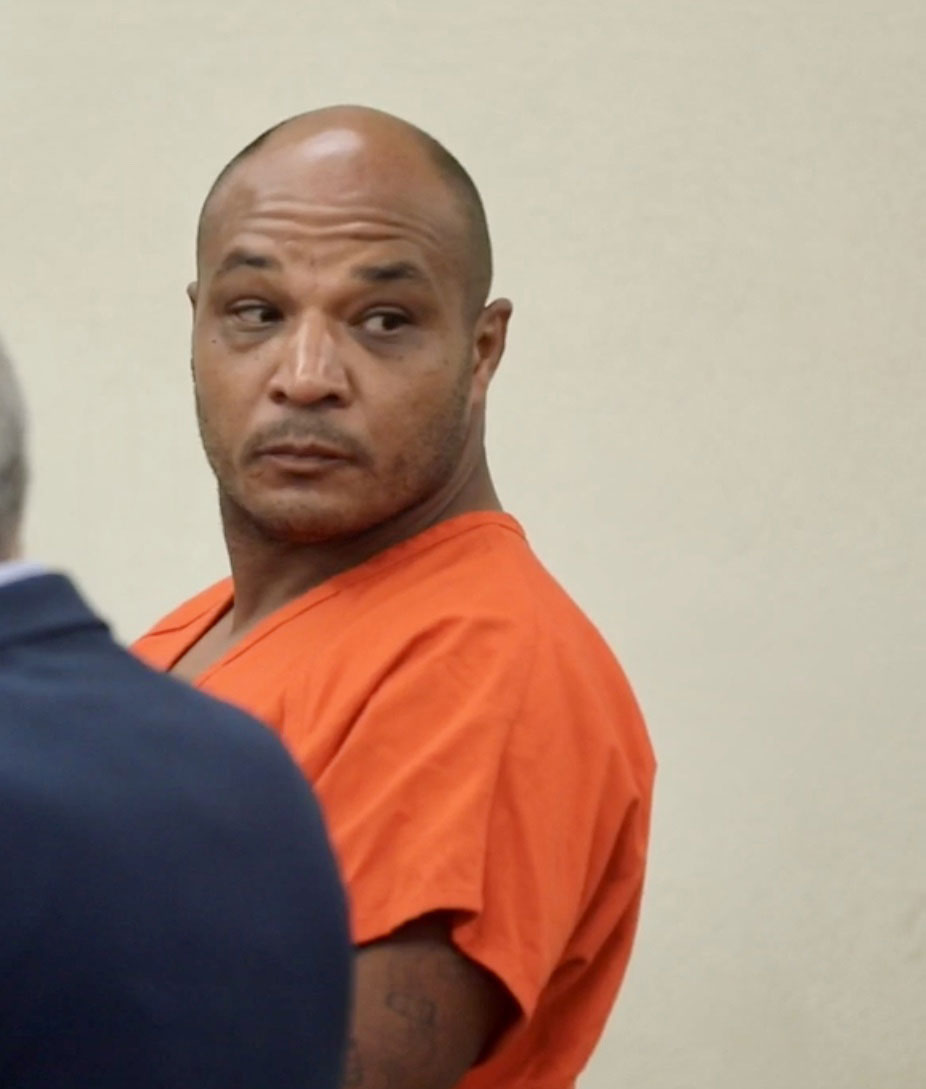
She said she was shocked when she heard her nephew was accused of shooting a police officer but said Roberts needs psychological help.
“If they can give him some professional help he really needs it,” she said. “Other than that, I just leave him in the hands of the Lord.”
Roberts menaced his family again on Oct. 3 when police said he threatened his ailing mother, Audrey Toliver, with a vodka bottle, police said. She grabbed a kitchen knife for self-defense.
Roberts left the house without anyone getting hurt. Prosecutors said there was insufficient evidence to file charges.
Now, Roberts faces a much tougher situation. He is charged with three counts of attempted first-degree murder of a law enforcement officer, one count of aggravated battery on a law enforcement officer and two counts of aggravated assault on a law enforcement officer. He is also charged with possession of a firearm by a convicted felon. On four of those seven charges, he faces life in prison if found guilty.
Roberts said in the interview with The News-Journal that life in prison is too harsh a punishment since his actions that night arose from a personal brew of depression, post-traumatic stress disorder, and bad drugs.
And he takes exception to Daytona Beach Police Chief Craig Capri’s characterization of him as a “typical street maggot.”
“The police chief was saying all this stuff about me that was unprofessional. That I’m a cockroach. That I’m a maggot. Stuff like that.”
Roberts said police should have taken him into custody for mental evaluation under the state’s Baker Act during one of the earlier times he crossed paths with them.
“I have mental problems from PTSD, severe depression and bipolar disorder,” Roberts said. “I guess the police chief is trying to make it out like I’m some killer.”
Roberts said for the six days before the shooting he had been on cocaine, ecstasy, Percocet, and Lortab. He'd also been drinking Hennessy, a cognac.
“They said meth was in my system,” Roberts told The News-Journal. “I don’t know where the meth came from.”
Roberts said he was off his psych medications at the time he was accused of shooting Hird. Roberts also says he was abused as a child growing up in Daytona Beach.
With his felony record and mental illness, he couldn’t legally purchase or possess any firearm including the AK-47, a Soviet-era, automatic military weapon.
“I found it where somebody hid it at,” Roberts said. “They had it at an abandoned house and I knew where it was.”
Roberts claimed he saw a man he didn’t recognize stash a big tote bag behind and underneath a house off Martin Luther King Jr. Boulevard.
“I was thinking it was either money or drugs they were stashing back there,” Roberts said.
Instead, when he opened the bag he found the AK-47 wrapped in a towel or blanket.
Later that Sunday, Roberts was standing at the corner waving around the formidable firearm, according to an incident report. When Officers Hird and Nikolow arrived, Nikolow shined a light into a dark field, and Roberts started shooting.
After his arrest, Roberts told police he had been looking for some people who had wronged him. He also said in the interview the police didn’t identify themselves.
“I was shooting at those cars. I didn’t know it was the police,” he told The News-Journal.
He said the light made it tough to see.
“It was a big bright light on me. I had been up six days. I didn’t really know who it was,” Roberts said.
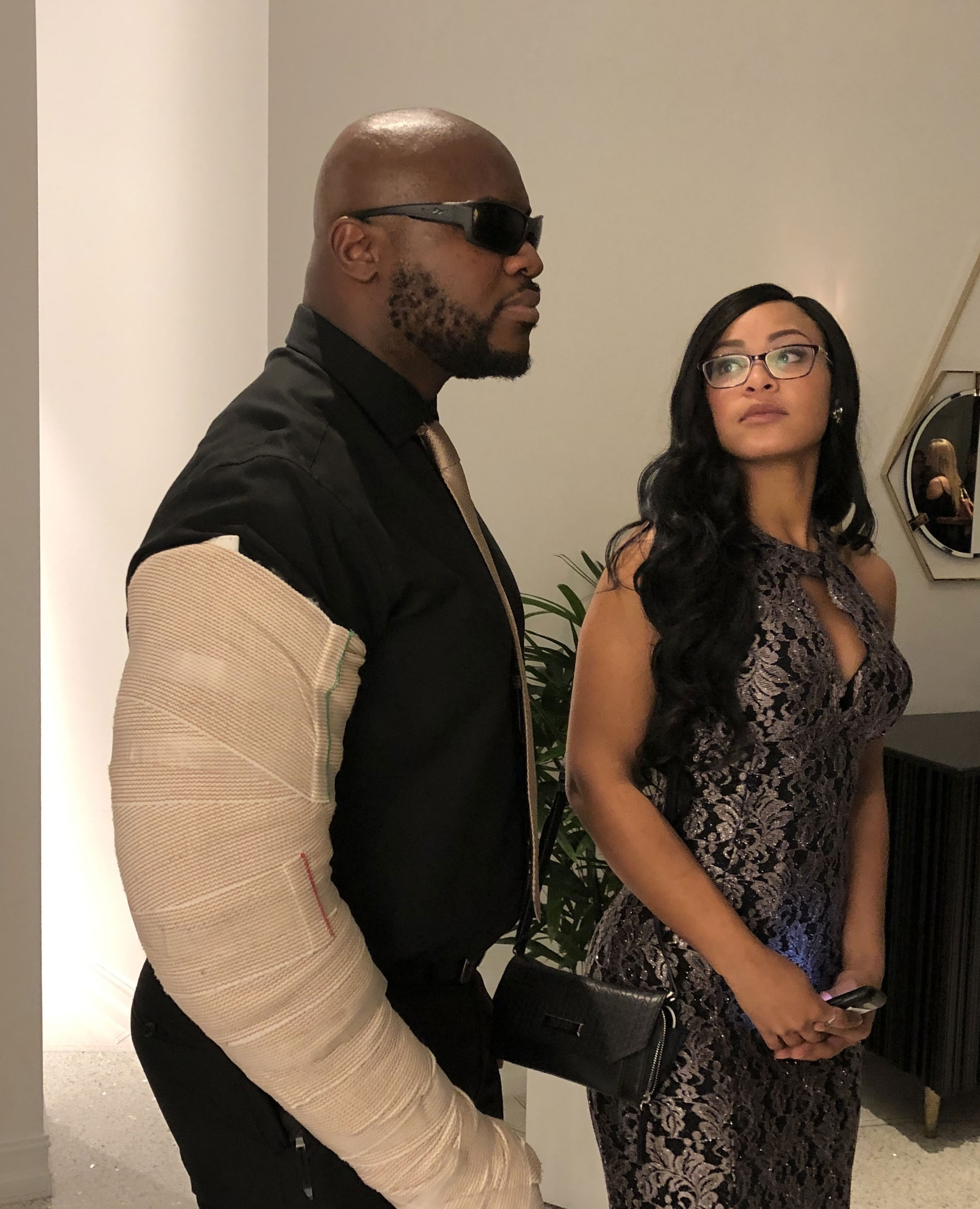
Drugs in the Polar Pop
When deputies spotted Parker on Nov. 19, 2018, they had been looking for him for the shooting of 33-year-old Daniel Dekmar nine days earlier in DeLeon Springs.
Parker had a woman with him in the car when a deputy saw him driving south on U.S. 17 near State Road 40. Reports state Parker then swung into the northbound lanes and tried to ram the deputy, running him off the road.
Deputies chased after Parker and used deflation strips to puncture his Honda’s tires. Parker stopped the car in DeLeon Springs, jumped out and started shooting at deputy Kevin Moss, reports state.
As Parker shot at Moss, deputy Wesley Blum rolled up and, from inside his cruiser, fired at Parker through the windshield.
DeLand police Cpl. Tony Tagle was driving to the gym when he also came upon the shootout. Tagle stopped his car, pulled out his rifle and also shot at Parker.
Parker said in the phone interview with The News-Journal the first bullet hit him in the hip as he ran and spun him around. But he said he doesn’t remember much else.
“I know I got the scars now. At that moment in time, I didn’t feel anything,” said Parker, who told police in their investigation that he was trying to commit suicide by cop.
Police performed first aid on Parker until paramedics arrived. Parker said a rifle bullet also bore through his chest and left lung before exiting his body and cutting back into his arm.
A .40-caliber slug from a deputy’s pistol caught him in the hip.
He said after he fell police were yelling commands at him. But Parker said he was suffocating, choking on his own blood.
“They were telling me to stop resisting, stop resisting. At that moment I wasn’t resisting anything but death,” Parker said.
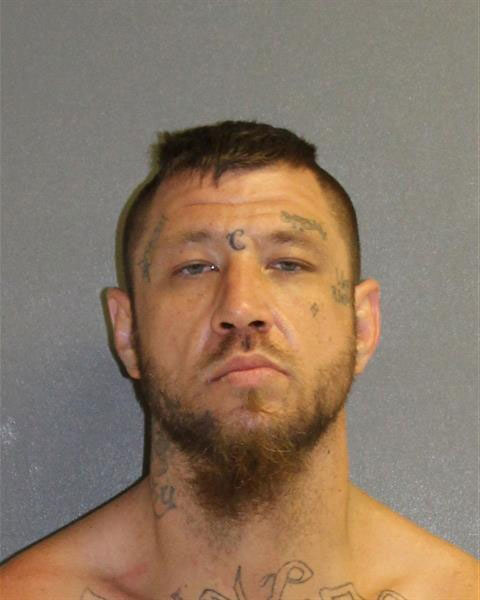
Several law enforcement officers later received commendations for saving Parker’s life. The State Attorney's Officer cleared the DeLand officer who shot Parker from wrongdoing after a standard state investigation.
Like Roberts, Parker said he wasn’t thinking clearly at the time he was accused of shooting at police. He said he was accidentally drugged.
The day of the shootout, Parker said that when he first spotted a deputy the woman with him became nervous and wanted to get rid of his drugs. He said she spiked his cup of Mountain Dew.
“The person that was in the car with me dumped all my drugs into my Polar Pop cup and I didn’t know it,” he said. “And I drank it.”
The drug cocktail contained about 3 grams of methamphetamine and some LSD.
It didn’t help that Parker was already on drugs. He told The News-Journal he downed some Dilaudid and smoked marijuana that day.
“I don’t feel like the full weight of the law should be dropped on me like that because I wasn’t aware. I was too high to really understand anything that was going on,” Parker said.
Parker admitted to dealing drugs, but he said he is not a bad person.
“I’m not Pablo Escobar,” Parker told the newspaper, referring to a Colombian drug cartel leader who was killed by police in 1993. “I don’t sell drugs and make a million dollars. I sell drugs to get by until I find something better.”
He said he grew up on the west side of Volusia County and got as far in his education as Deltona High School before he got into fights, was arrested, and kicked out of school.
“I’ve always had an anger issue,” Parker said. “I’ve always had issues. I have a bully issue. When I see other people getting bullied, and I don’t like people that are bullying other people, it pisses me off.”
He said he grew up around outlaw biker gangs and in the late 90s, he joined the Crips. He has “Broken” tattooed on his right temple, and “war ready” on his left temple. He has a “C” on his forehead which he said stands for “criminal.”
“I use my face as a message board,” he added. “It’s like a billboard. It’s something that I want the world to see.”
And he said he wasn’t trying to shoot any law enforcement officers, but the fact he was armed at all was a crime. Parker has numerous felony convictions.
He said he got the gun he had “on the street,” adding that it’s easy to find a gun if you know where to look. He wouldn’t say exactly how he got the firearm.
As for shooting Dekmar, Parker said he had no choice, calling it a case of self-defense. Parker said Dekmar was angry because he mistakenly thought Parker was having an affair with his girlfriend.
So Parker said when he showed up to see another woman at Dekmar’s house, an angry Dekmar came at him with a knife.
He said none of his fellow inmates believe he did anything wrong when he said he defended himself against Dekmar.
“I don’t necessarily walk righteous in the eyes of the law," he said. "But in the eyes of men that I deal with, I’m righteous to them.”

One year of Volusia-Flagler shootings - how we did it
To report this project, The Daytona Beach News-Journal for the first time ever compiled records on every shooting over the course of a year in which a person was killed or wounded in Volusia and Flagler counties.
Our reporting sought to include every shooting victim from 2018, including those shot by others or themselves, intentionally or by accident.
Police and other government agencies don’t list or track every shooting injury — many are non-criminal — so reporters Suzanne Hirt, Frank Fernandez, Patricio G. Balona and Matt Bruce made dozens of public records requests to all 15 local police agencies to obtain incident reports on the 176 people shot in 2018. The aggregated data and details — provided with analysis and visualization help from Data Editor Dinah Voyles Pulver — became the basis for this project.
We found that shootings that are investigated as crimes are well documented by law enforcement. But other incidents involving people being shot — especially suicides — were sometimes coded differently, and some records officials missed some shootings on the first request for a report. In early January, we believed we had reports of all the shootings only to find through a records request to the Volusia County Medical Examiners Office that there were 36 more self-inflicted gunshot deaths.
We found that shootings that were investigated as crimes were well documented by law enforcement. But other incidents involving people being shot — especially suicides — were sometimes coded differently, and records officials missed some shootings on the first request for a report. In early January, we believed we had reports of all the shootings, only to find through a records request to the Volusia County Medical Examiners Office that there were 36 more self-inflicted gunshot deaths.
The News-Journal, except in rare instances, doesn’t write stories about suicides that are committed in private, so without even a news report, public documents were much harder to obtain weeks or months later.
"The cold fact that the vast majority of fatal shootings turned out to be suicides is something that deserves further reporting," said News-Journal Editor Pat Rice. "Whatever one's thoughts are about guns, it's important that as a community we work harder to prevent people from harming themselves. That's an issue The News-Journal will continue to pursue."
As the data collecting continued, reporters attempted to contact all 64 people who survived a shooting last year. Most were hard to reach or find, but Hirt interviewed several of them and their loved ones, including: a woman whose partner shot her at close range; two children wounded in accidental shootings; two men who shot themselves unintentionally; and the roommate of a man who committed suicide. Other survivors reached declined to discuss their ordeals.
Fernandez looked at gun suicides, which accounted for the majority of local and national shooting deaths last year. Fernandez spoke to a mother whose adult son shot himself to death in their Volusia County home four years after the son witnessed an undercover sheriff’s deputy shoot and kill his father.
Reporters also mined federal government agencies’ databases and reports to bring context to the local data The News-Journal collected. Sources used outside of local law enforcement include the Centers for Disease Control and Prevention, suicide-prevention and firearms injuries studies and, for fatalities, medical examiners.
John Gallas is The News-Journal's deputy managing editor for digital and editor for crime, courts and breaking news in Volusia County.